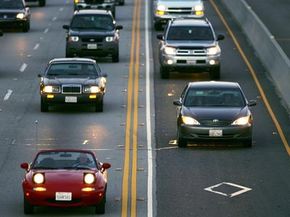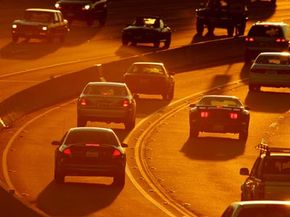In most cities and states throughout the United States, the High Occupancy Vehicle (HOV) lane is the coveted strip of the highway. Also known as the carpool lane or the diamond lane, the HOV lane isn't for every car on the road. Although rules vary from state to state, it's generally set aside for any cars, trucks, buses or vans with two or more people inside. On top of that, motorcycles and emergency vehicles get to use them, too.
The point of the HOV lane is to free up traffic congestion and increase efficiency by giving vehicles carrying more people special access to the inside lanes, which are typically the far left ones. Commuters are therefore given incentive to pile more people into their cars or take the bus to work, and this is supposed to cut down on the number of cars out on the road, too. Carpoolers can therefore get to work faster since the outside lanes with single drivers will be more congested, and buses running on tight time schedules can make it from stop to stop easier. You can easily identify the HOV lane because it's typically separated from the regular lanes by a solid white line and it includes a repeating series of large, white diamonds that run through the center of the lane, hence the nickname "diamond lane."
Advertisement
Fewer cars on the road equal fewer carbon emissions, which can significantly lessen the impact vehicles have on global warming. This has made carpooling and the HOV lane an important part of the push for eco-friendly driving. But lately some states have considered another class of vehicles for the diamond lane, and, interestingly enough, carpooling doesn't factor into the equation.
Depending on where you live, owners of fuel-efficient vehicles like hybrid cars might get special privileges on the highway. Since the focus of a hybrid car is on fuel efficiency and green driving, some hybrid cars could get the same benefits as a bus or a carpool van.
Advertisement


